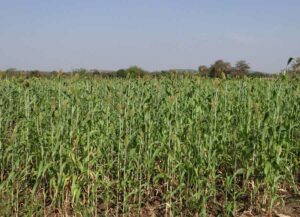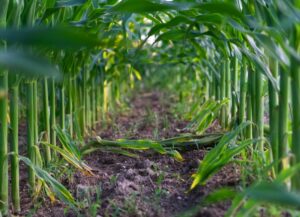Alvaro Garcia
Corn silage is one of the main forage sources in intensive dairy production systems around the world. Reasons for this preference are its energy concentration compared to other forages as well its high yield per hectare when growth conditions are adequate. Through the years corn genetics has been improved based on certain characteristics such as improve energy yielding nutrients (i.e. starch, lysine, oil) as well as overall increases in the digestibility of its organic matter (i.e. waxy, leafy, low lignin). Good corn silage hybrids have high yields, high energy, high digestibility, and adequate animal performance.
Since starch is deposited in the kernels, the amount of grain in the ration is associated with the energy content of the silage. The energy value of corn silage is highly dependent on the content and digestibility of starch and fiber components. Fiber is mostly fermented in the reticulorumen and the products of its fermentation are utilized by rumen microorganisms.
In general, corn silage hybrids with softer and slower drying kernels, preserve better in the silo and have higher total starch digestibility. With starch of lower digestibility (i.e. flinty), a portion can end up in the manure, particularly with higher rates of passage typical of high producing, high intake cows. Thus, it is important to understand the constitutional factors influencing grain digestion.
Improvement in milk production for example have been observed when feeding silage made with BMR hybrids and leafy corn silage hybrids compared with conventional corn silage hybrids. Since every year there are new seed corn hybrids in the market, it is important to be aware of its agronomic traits, and the performance to be expected when fed to dairy cattle.
Two new corn silage leafy-floury hybrids [MC 527 (LF1) and MC 5250 (LF2)] have a floury starch structure and higher digestible fiber when compared with traditional seed corn hybrids that are high in flint starch and lower digestible fiber. Among their agronomic advantages are an increased yield, higher sugar concentration, higher digestible fiber, and greater starch digestibility when compared with standard silage.
A recent experiment (Acharya and Casper, 2020) evaluated the lactational response when these 2 new corn silage hybrids (LF1 and LF2) were fed to early lactation dairy cows (4 – 12 weeks postpartum) compared with a conventional corn silage hybrid silage. The parameters evaluated were: nutrient composition, dry matter (DM) intake, digestibility, and lactational performance.
Corn silage hybrid in each treatment were:
- STA (a blend of seeds including DKC48–12, DKC 52–29, and DKC 53–78 RIB Brand Blend)
- MC 527 (LF1; 105 days maturity)
- MC 5250 (LF2; 102 days maturity)
Seeding rate was 86,487/Ha and followed common agronomic practices; fields were fertilized before planting according to soil testing. The LF1and LF2 silage hybrids were grown and harvested during the 2012 crop year, and the STA silage grown and harvested during the 2013 crop year. Silage was harvested at recommended maturity days for each experimental variety and chopped at 1.9 cm theoretical length of cut with a kernel processor.
After harvesting, silage was treated with a Lactobacillus inoculant, ensiled in an Ag-Bag, and allowed to ferment until fed. Storage times were 4, 14, and 14 months for STA, LF1, and LF2 corn silages, respectively.
The experimental diets were fed as a TMR and contained 63.9% forage (24.9% alfalfa hay and 75.1% corn silage) and 36.1% concentrate on a DM basis. Formulation and ingredient proportions were the same among treatments, the only variable being the type of corn silage.
Starch content was higher in STA silage
Starch content was higher in STA silage (37.0% DM) compared with LF1 (32.4% DM) and LF2 silages (33.3% DM) so starch content in the STA diet was greater (26.3% DM) than in the LF diets (23.5% DM).
There were no differences in DM intake (22.9 kg/d), milk yield (35.5 kg/d), energy-corrected milk yield (37.5 kg/d), feed efficiency (1.69 kg/kg; 3.5% fat-corrected milk/dry matter intake), milk fat (3.94%), milk protein (3.08%), and body weight change (−0.08 kg/d) between silage hybrids. However, cows fed the STA silage had lower ruminal pH and acetate along with higher propionate molar percentages.
There were similarities in DM intake, milk production, and composition among hybrids which demonstrates that a lower starch, although more digestible fiber corn silage can support a similar milk production compared with a higher starch, lower digestible NDF silage.
Reference
Ishwary P. Acharya and David P. Casper. Lactational response of early-lactation Holstein cows fed starch or floury corn silage. 2020. J. Dairy Sci. 103:5118–5130.
© 2020 Dairy Knowledge Center. All Rights Reserved.











